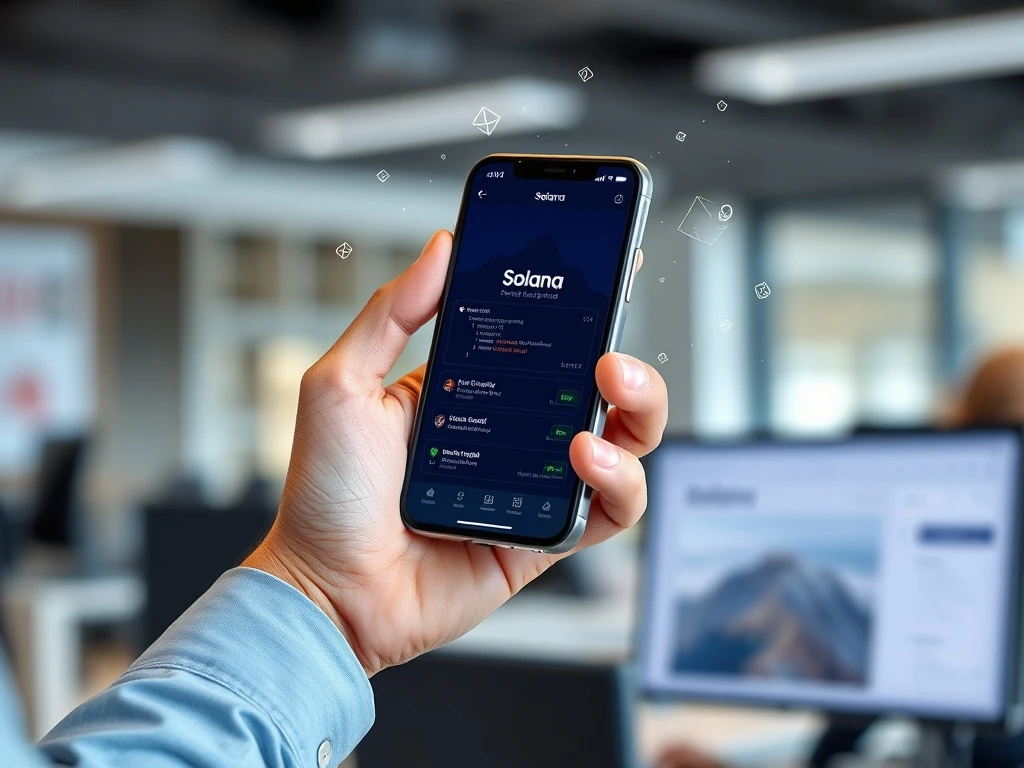Solana DApp: Build Amazing Mobile Apps in 15 Minutes, No Backend Needed

Imagine building a fully functional Solana DApp for millions of users in just 15 minutes, without touching a single server. For Web3 developers, this isn’t science fiction anymore. The world of decentralized applications is rapidly moving to mobile, and Solana is leading the charge with tools that simplify development dramatically. Gone are the days of complex back-end setups and tricky cross-platform challenges. Today, you can leverage powerful toolkits to create engaging mobile DApps that connect directly to wallets and the blockchain.
Why Build Mobile DApps on Solana Today?
Solana has become a hub for consumer-focused and DeFi applications, attracting significant developer interest. As mobile usage dominates, there’s a clear need for tools that make it easy to build mobile DApps. Solana’s ecosystem now provides a mobile-first developer toolkit designed for speed and simplicity. These tools integrate seamlessly with native mobile platforms, removing the need to set up custom infrastructure. Developers can focus on building great features and user experiences.
Key advantages of building on Solana’s mobile stack include:
- Prebuilt wallet adapters supporting deep links and native protocols.
- Components ready for displaying NFTs, balances, and tokens.
- Unified codebase support for iOS and Android using React Native.
Whether you’re creating an NFT gallery, a portfolio tracker, or a token swapping tool, Solana’s mobile approach offers speed and flexibility.
The Tech Stack: React Native Meets Solana
To achieve this rapid development, developers use a specific set of tools:
- React Native: For building cross-platform iOS and Android apps from a single codebase.
- Solana Mobile App Kit: An SDK with Solana-native mobile components.
- Wallet Adapter (React Native): Provides easy wallet connectivity via deep links.
- SEND Kit: Offers app templates for common use cases like NFTs and DeFi.
- @solana/web3.js: The standard library for interacting with Solana RPC endpoints.
- Mobile Wallets (e.g., Phantom, Backpack): Wallets that support deep linking and native protocols.
This stack is designed so developers don’t need to build traditional back ends. Wallet integrations handle user identity and transaction signing, while direct RPC calls fetch data and trigger onchain actions. This is where the power of React Native combined with Solana’s specific mobile tooling shines.
Say Goodbye to Servers: No Backend Required
The revolutionary aspect of this approach is the ability to build fully functional DApps with no backend infrastructure. How is this possible? It relies on leveraging the capabilities of mobile wallets and the decentralized nature of the blockchain itself.
Instead of:
- Building custom authentication systems.
- Setting up databases to store user data or token info.
- Creating APIs to interact with the blockchain.
- Managing server security and scaling.
You now:
- Use wallet connections (deep links or MWA) for user identity and transaction signing.
- Fetch all necessary data (balances, NFTs) directly from Solana RPC endpoints.
- Trigger onchain actions (swaps, mints) via transactions signed by the user’s wallet.
This shift eliminates the need for traditional server-side components, dramatically reducing complexity, cost, and development time. It’s a true zero-infrastructure deployment model for DApps.
Building Your Solana DApp: A Quick Guide
Ready to build? Here’s a simplified look at the steps involved:
Set up your project: Initialize a new React Native app, ideally using a tool like Solana AppKit’s CLI (
npx start-solana-app) which scaffolds a project with wallet support and RPC tools ready.Integrate Wallet Login: Use the Wallet Adapter for React Native to connect to mobile wallets via deep links or the Mobile Wallet Adapter protocol. This handles user connection and transaction requests securely without a server.
Fetch Onchain Data: After connecting, use
@solana/web3.jsto query user account details like SOL balance, tokens, and NFTs directly from a Solana RPC endpoint. This data is public and accessible client-side.Trigger Onchain Actions: Implement features like token swaps or NFT mints. Tools like Solana AppKit integrate with protocols (e.g., Jupiter, Metaplex), allowing you to construct transactions and send them to the connected wallet for user approval and signing.
Deploy Your App: Use standard React Native tools (
npx react-native run-iosorrun-android) to build and test. SEND Kit provides modular templates to speed up customization and deployment to app stores.
This streamlined process makes building a functional Solana DApp faster than ever.
Scaling Your Web3 Mobile App
Once your initial app is live, you can add more features and scale its capabilities:
- Integrate Solana Pay for payment features.
- Add push notifications for transaction confirmations (potentially using decentralized notification protocols if available).
- Implement biometric security like Face ID via React Native libraries.
- Use onchain analytics tools to understand user engagement.
- Expand wallet compatibility using the Wallet Adapter’s modular design.
- Add UI enhancements like dark mode or multilingual support using standard React Native libraries.
Building a successful Web3 mobile app means continuously improving the user experience and adding value while maintaining the decentralized architecture.
Conclusion: The Future of Web3 Mobile Development
The ability to build powerful, cross-platform Web3 mobile applications with no backend required is a significant step forward. It democratizes DApp development, making it accessible to more developers and enabling faster innovation. Solana’s focus on mobile tooling, combined with the power of React Native and the SEND Kit ecosystem, provides a robust foundation for building the next generation of decentralized mobile experiences. If you’re looking to enter the Web3 space or expand your existing projects to mobile, now is the opportune moment to leverage these efficient tools and build mobile DApps quickly and effectively.
This article does not contain investment advice or recommendations. Every investment and trading move involves risk, and readers should conduct their own research when making a decision.









